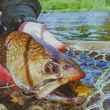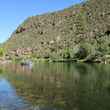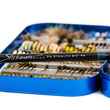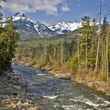If water were an option in rock/paper/scissors, there would be no game. Water wins. Always. Given time, water will eat a mountain and eat it with such gentle caress and subtle gnawing that the mountain never knows it’s doomed. Jack Kerouac had it beautifully backwards when he said: “It was the work of the quiet mountains, this torrent at my feet.” Sorry, Jack. There is a dance between mineral and water, but water always leads.
Be water
by Johnny Carrol Sain - Wednesday, Oct 14th, 2015





























